| [1] Chung KC, Watt AJ, Kotsis SV et al. Treatment of unstable distal radial fractures with the volar locking plating system. J Bone Jt Surg. 2006;88-A: 2687-2694.
[2] Ruch DS, McQueen MM. Distal radius and ulna fractures.In: Bucholz RW, Heckman JD, Court-Brown CM, Tornetta P (eds) Rockwood and green’s fractures in adults, 7th edn. Wolters Kluver, Philadelphia, 2010: 829-880.
[3] Fernandez DL, Wolfe SW. Distal radius fractures. In:Green DP, Hotchkiss RN, Pederson WC, Wolfe SW (eds) Green’s operative hand surgery, 5th edn. Churchill Livingstone,Philadelphia, 2005: 645-710.
[4] Geissler WB, Fernandez DL. Percutaneous and limited open reduction of the articular surface of the distal radius. J Orthop Trauma. 1991;5:255-264.
[5] Hove LM, Furnes O, Nilsen PT et al. Closed reduction and external fixation of unstable fractures of distal radius. Scand JPlast Reconstr Surg Hand Surg. 1997; 31:159-164.
[6] Cooney WP. Fratures of the distal radius:a modem treatment based classification. Orthop Clin North(Am). 1993;24:21l-216.
[7] Knirk JL,Jupiter JB. Intraarticular fractures of the distal end of the radius in young adults. J Bone Joint Surg. 1986;68:659-674.
[8] Wright TW, Horodyski M,Smith DW,et al. Functional outcome of unstable distal radius fractures:ORIF with a volar fixed-angle tine plate versus external fixation. J Hand Surg Am. 2005;30(2):289-299.
[9] Margaliot Z,Haase SC,Kotsis SV,et al.A meta-analysis of out-comes of external fixation versus plate osteosynthesis for unstable distal radius fractures.J Hand Surg Am. 2005;30(6):1185-1199.
[10] 王岩,周永刚,毕文志,等主译. 坎贝尔骨科手术学[M]. 11版. 北京:人民军医出版社,2009.
[11] Riis J, Fruensgaard S. Treatment of unstable distal Colles’fractures with external fixation. J Hand Surg. 1989; 4:145-148.
[12] Rikli DA, Kupfer K, Bodoky A . Long term results of external fixation distal radius fractures. J Trauma. 1998;44:970-976.
[13] Sanders RA, Keppel FL, Waldrop JI. External fixation ofdistal radius fractures: results and complications. J Hand Surg. 1991; 16:385-391.
[14] Liporace FA,Gupta S,Jeong GK,et al.A biomechanical comparison of a dorsal 3.5ram T-plate and a volar fixed-angle plate in a modal of dorsally unstable distal radius fractures.J Orthp Trauma. 2005;19:187-191.
[15] Fernandez DL, Wolfe SW. Distal radius fractures. In:Green DP, Hotchkiss RN, Pederson WC, Wolfe SW (eds) Green’s operative hand surgery, 5th edn. Churchill Livingstone,Philadelphia, 2005:645-710.
[16] Kandemir U,Matityahu A,Desai R. Does a volar locking plate provide equivalent stability as a dorsal nonlocking plate in a dorsally comminuted distal radius fracture:a biomechanical study. J Orthop Tauma. 2008;22(9):605.
[17] Figl M, Weninger P, Liska M. Volar fixed-angle plate osteosynthes is of unstable distal radius fractures:12 months results. Arch Orthop Trauma Surg. 2009; 129(5):661-669.
[18] Gehrmann SV, Windolf J, Kaufmann RA. Distal radius fracture management in elderly patients:a literature review. J Hand Surg Am. 2008;33(3):421-429.
[19] Kim JK,Cho SW.The effects of a displaced dorsal rim fracture on outcomes after volar plate fixation of a distal radius fracture. Injury. 2012;43(2):143-146.
[20] Frattini M, Soncini G, Corradi M,et al. Complex fractures of the distal radius treated with angular stability plates. Musculoskelet Surg. 2009; 93:155-162.
[21] Dobretz H, Kutscha-Lissberg E. Osteosynthesis of distal radial fractures with volar locking plate system. Int Orthop. 2003; 27:1-6.
[22] Ruch DS, McQueen MM. Distal radius and ulna fractures.In: Bucholz RW, Heckman JD, Court-Brown CM, Tornetta P (eds). Rockwood and green’s fractures in adults, 7th edn. Wolters Kluver, Philadelphia, 2010: 829-880.
[23] Margaliot Z, Haase SC, Kotsis SV, et al. A meta-analysis of outcomes of external fixation versus plate osteosynthesis for unstable distal radius fractures. J Hand Surg [Am].2005;30:1185-1199.
[24] Paksima N, Panchal A, Posner MA, et al. A meta-analysis of the literature on distal radius fractures: review of 615 articles. Bull Hosp Jt Dis. 2004;62:40-46.
[25] Handoll HH, Madhok R. Surgical interventions for treating distal radial fractures in adults. Cochrane Database Syst Rev. 2003;4:CD003209.
[26] Kapoor H, Agarwal A, Dhaon BK. Displaced intra-articular fractures of distal radius: a comparative evaluation of results following closed reduction, external fixation and open reduction with internal fixation. Injury. 2000;31:75-79.
[27] Khanduja V, Ng L, Dannawi Z, et al. Complications and functional outcome following fixation of complex, intra-articular fractures of the distal radius with the AO Pi-Plate.Acta Orthop Belg. 2005;71:672-677.
[28] Hahnloser D, Platz A, Amgwerd M, et al. Internal fixation of distal radius fractures with dorsal dislocation: pi-plate or two 1/4 tube plates?: a prospective randomized study. J Trauma. 1999;47:760-765.
[29] Keller M, Steiger R. Open reduction and internal fixation of distal radius extension fractures in women over 60 years of age with the dorsal radius plate (pi-plate). Handchir Mikrochir Plast Chir. 2006;38: 82-89.
[30] Ruch DS, Papadonikolakis A. Volar versus dorsal plating in the management of intra-articular distal radius fractures. J Hand Surg [Am]. 2006;31:9-16.
[31] Simic PM, Robinson J, Gardner MJ, et al. Treatment of distal radius fractures with a low-profile dorsal plating system: an outcomes assessment. J Hand Surg [Am]. 2006;31:382-386.
[32] Knirk JL,Jupiter JB. Intra-articular fractures of the distal end of the radius in young adults.J Bone Joint Surg Am. 1986;68:647-659.
[33] Wright TW, Horodyski M, Smith DW. Functional outcome of unstable distal radius fractures: ORIF with a volar fixed angle time plate versus external fixation. J Hand Surg [Am]. 2005;30:289-299. |
.jpg)
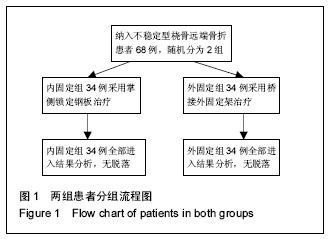
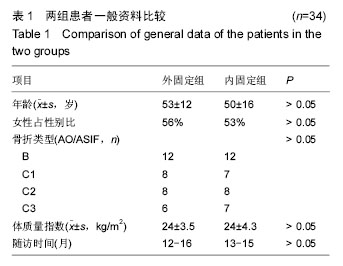
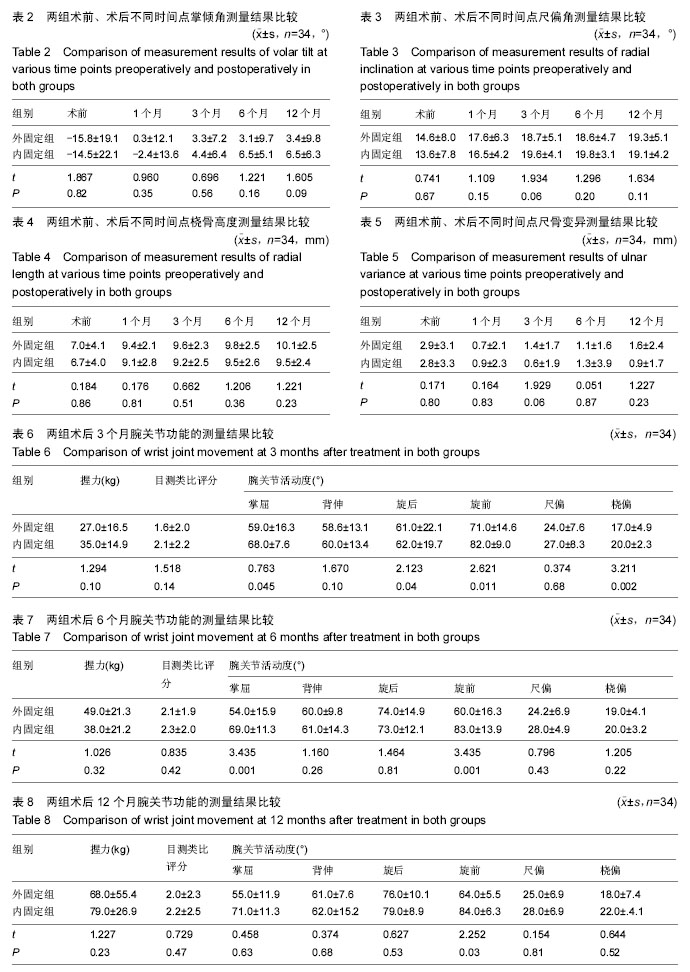
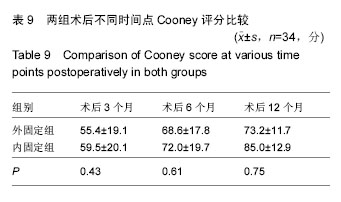
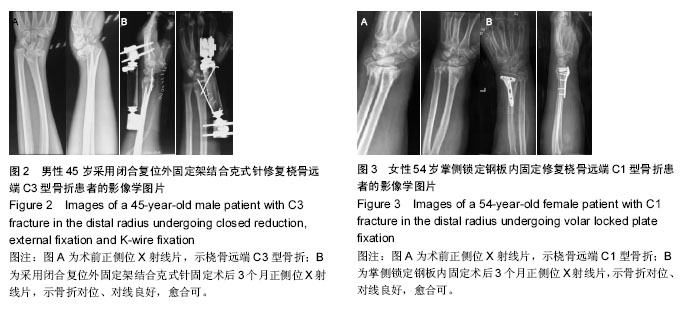
.jpg)